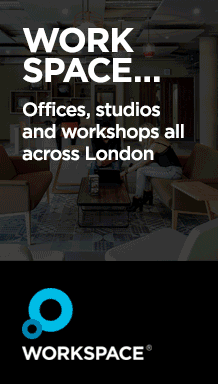| Informed Funding |

A Peer-to Peer Lending platform is an alternative banking model used by investors and borrowers alike to access liquidity and investment opportunities not currently being provided to the public by the mainstream banks. Because of the current economic situation, together with a growing population of internet savvy users, and the speed of achieving the end goals of the investors and borrowers, crowdfunding and P2P lending has become the growing phenomenon of the decade. Currently in the UK there is a new platform being launched every month, each one with new ideas and features being offered to differentiate their business and gain traction and market share. Let us now look at the absolute necessities one needs to bear in mind when launching a new platform.
1) A long-term investment
One cannot stress enough, within the Peer-to-Peer lending and Crowdfunding sector, the relevance of the software utilized to run the platform, effectively the software is the platform. The esthetics of the customers’ portals and the clarity and power of the message are obviously important components which help attract new business. However, what happens behind the scenes, i.e. in your back office, will ultimately dictate the success or failure of your platform. In essence the software is the platform, if the software breaks you will not be able to carry on doing business and with such increasing competition, customers will hardly give you a second chance. Make sure that whoever develops your platform uses an open architecture, and that they will still be around in 5-10 years’ time to provide you with the required maintenance, support and systems upgrades.
2) Know-What-You-Want
It is critical that you do as much preparation as possible before embarking into any project. It is vital that you have a clear and detailed project plan with workflow scenarios explained, blueprint, etc.. Software developers, whether in-house or from an established software vendor, will usually do what you tell them to. If you are not clear as to what you want, they will not be clear either. This will cause big problems, it will delay the project which will increase the costs, and ultimately you will end up being an unsatisfied customer with a platform that does not match your expectations.
3) Adopt Your Model Wisely
There are three basic models to choose from and some hybrids:
A. In-house Developers: Believe it or not, existing platforms using this method employ between 9 to 15 developers, consider office space and rolling annual costs. The advantage is to have the support required in-house which is reassuring if the system fails or needs bug fixes. But developing something from scratch will take you at least one year if not more to complete, and you will not be guaranteed the outcome you wanted.
B. White-labelled solution: If your model is simple, and it will stay simple, why not save some money by copying an existing platform, put your logo onto it and start working. However, consider possible pitfalls: maintenance and support, flexibility and cost of making changes or creating new products and features, or needing to comply to new regulatory changes, if at all possible. Typically this solution offers the least amount of flexibility.
C. Specialised software vendor: Initial costs may seem higher but in the long-run this solution results more cost effective than hosting a team of developers in-house, but it is more expensive than a white labelled solutions.
Outsourcing the development work to experts in the field carries obvious advantages. A specialist vendor will provide you with the highest quality standards, professional maintenance and support, as well as easiness to provide system upgrades and customisations. Pick a vendor with a modular platform which can offer scalability and which can enhance or customize your platform when required, making it cost effective. Usually a specialist vendor with banking experience will ensure the delivery of functionality, security, traceability and optimal performance which is hard to guarantee from the other two models.
4) Have Vision & Be Scalable
Considering that you are building a new platform and possibly a new company, you will want to make sure money is not wasted. Build now what you need now, and make sure you will be able to enhance your platform later as your business matures and your requirements increase. So make sure that it will be possible to add new products and manage a fast expanding client-base with ease and cost-effectively. Find out the costs for future upgrades or customisations that may be required. Discuss volumes and hardware requirements. Technology changes fast, regulation demands further changes, make sure your developers are using the latest technology and languages available: c++, C#, .net, etc.. Some legacy systems are so old that it becomes impossible to find technicians with the required skills to support these. Make sure your contract includes regular system upgrades as this will help avoid your platform’s technology becoming obsolete.
5) Choose a Partner with Banking Experience
It is better to use developers with banking experience, why? A specialist vendor with banking experience like PROFILE Software, will be in a position to also act in a consulting role. For someone new in this field or with not much experience, it is more probable than not, that there are requirements that they would not have imagined the need to deal with, or to be careful of. Gaining the relevant experience through making your own mistakes may prove to be too costly for most.
By , Business Development Manager, PROFILE Software UK



